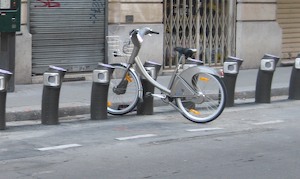 Visitors from abroad often ask me whether I’m concerned by the level of video surveillance in Britain. It’s widely reported that we are the most-watched country in the world, with more public CCTV cameras than anywhere else.
Visitors from abroad often ask me whether I’m concerned by the level of video surveillance in Britain. It’s widely reported that we are the most-watched country in the world, with more public CCTV cameras than anywhere else.
Well, I’m not too worried, though I know that if I had more time to worry about such things, I probably should be. My lack of concern is partly because, as someone who has been burgled on several occasions, I tend to approve of any measures that might help catch wrongdoers. Remember that old adage about “a conservative is a liberal who’s been mugged”? Secondly, as I’ve written before, I’m not much of a conspiracy theorist, and my faith in our authorities’ (a) general good intentions and (b) general incompetence makes it hard for me to get wound up about suggestions of anything too sinister.
I am very aware, though, that the fact I can afford not to worry about this is a privilege denied to much of the world. There are only a handful of countries where I would feel as unthreatened by it as I do here, and history is littered with stories of overnight revolutions… I may yet live to regret my folly. But life’s no fun if you feel you ought to worry about everything!
As I pointed out to friends recently, we all have numerous devices in our homes which anybody in the entire world could use to wake us up repeatedly in the middle of the night, deprive us of sleep, and, if they so desired, shout abusive messages at us, and do so completely anonymously! We tolerate such an outrageous situation because, for most of us, the benefits of the telephone outweigh the likely disadvantages. For me, CCTV cameras in public places still fall on the same side of the line.
There are about 5m CCTV cameras in public places in England and Wales – approximately one for every ten people – and the average Briton can expect to be caught on camera around 300 times per day. (I imagine a very small number of those instances will actually be recorded, however). The other figure I learned from this week’s Economist, though, which surprised me rather more, is that there are around 30m cameras in the USA, which makes the ratio per head of population about the same. Since many of my concerned visitors are from the States, I thought this was an interesting statistic.

 Visitors from abroad often ask me whether I’m concerned by the level of video surveillance in Britain. It’s widely reported that we are the most-watched country in the world, with more public CCTV cameras than anywhere else.
Visitors from abroad often ask me whether I’m concerned by the level of video surveillance in Britain. It’s widely reported that we are the most-watched country in the world, with more public CCTV cameras than anywhere else.







 That, at least, is the verdict of
That, at least, is the verdict of
Recent Comments